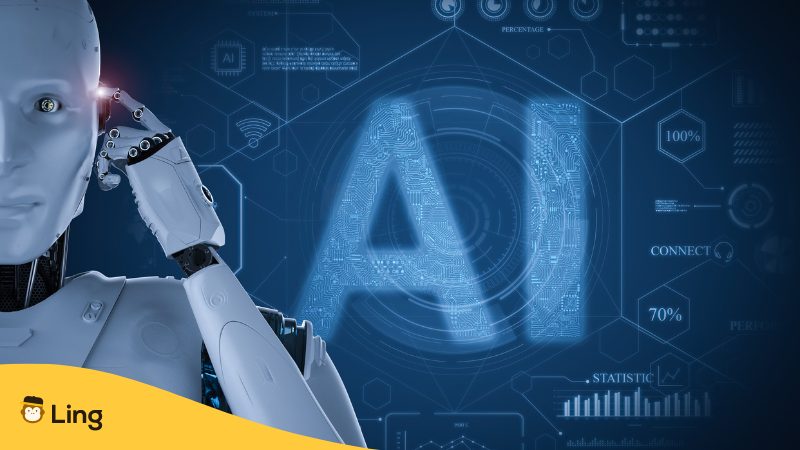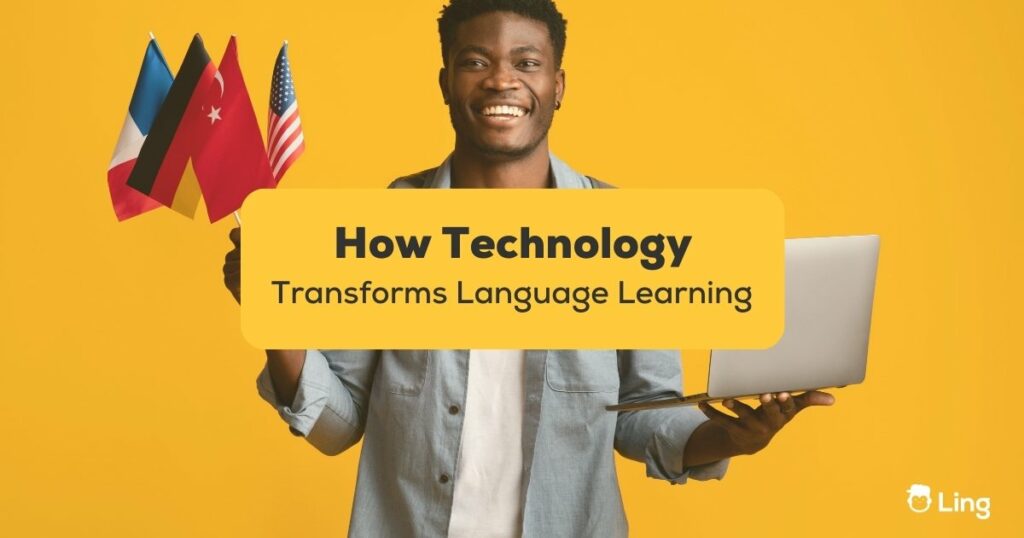Hello, language lovers! Welcome to another intriguing exploration into the world of languages. Today, let’s shift gears a bit and delve into something that’s been rapidly changing how we learn languages – technology.
Digital tools, like the very app, ChatGPT, you’re using now, have revolutionized language learning, making it easier, more accessible, and, dare we say, even more fun!chat
In the olden days, if you wanted to learn a language, your options were limited. You could enroll in a class (which could be expensive and time-consuming), find a language partner (a bit of a logistical challenge), or buy a book and teach yourself (requiring an immense amount of discipline). But technology, with all its superior features, has changed the way we learn a new language.
The Dawn Of Digital Language Learning
Learning a language has never been more straightforward, thanks to the rise of digital language learning tools like language learning apps, online courses, YouTube channels or even Instagram dedicated to teaching languages. These tools offer an accessible and convenient way to learn, making language acquisition a part of our daily routines.
Apps like the Ling app, Busuu or Babbel have become a game-changer in the language learning scene. They allow you to learn at your own pace, whenever and wherever. You’re waiting for a coffee? Why not squeeze in a quick lesson? Stuck in traffic? It’s the perfect time for a vocabulary drill! It’s language learning designed for the modern world.
The Perks Of Technology In Language Learning
So, what exactly makes digital language learning tools so fantastic? Let’s break it down:
- Flexibility: As we’ve mentioned, learn at your own pace, in your own time. No need to rearrange your life to fit a class schedule.
- Interactivity: Most apps offer interactive features, like games or quizzes, that make learning more engaging.
- Immediate Feedback: Mistakes are part of learning. With digital tools, you get instant corrections, allowing you to learn and adapt quickly. With Bussu, you can ask for other user to try to correct your grammar, by doing that you can get to know others learn in your community.
- Variety of Content: Want to learn through songs, podcasts, or interactive stories? There’s an app or website for that!
- Community: Many digital platforms connect you with a global community of learners for mutual support and practice.
The Challenges In Digital Language Learning
Yet, it’s not all roses. According to Lois Barbour, owner of traveltimeagency.com there are certain aspects where digital language learning can fall short:
- Lack of Personal Interaction: While some platforms offer video calls or chats, it’s not the same as face-to-face interaction. Non-verbal cues, which are crucial in communication, can often be missed.
- Dependence on Technology: No Wi-Fi? Forgot to charge your device? Technical glitches can disrupt your learning process.
- Lack of Depth: While digital platforms are improving, some might not offer in-depth explanations or cultural context that a human teacher could provide.
The Takeaway
The digital revolution in language learning is an exciting development. It’s making language learning more accessible and engaging, opening doors to new cultures and connections.
Yet, like any tool, its effectiveness comes down to how we use it. A balanced approach, perhaps combining digital learning with traditional methods, could be the best route to language proficiency.
In the end, our love for languages and your curiosity about the world is what drives our learning journey. And technology? It just gives us a boost of dynamics along the way.

AI: A New Frontier In Language Learning
One of the exciting innovations in digital language learning is the use of AI, like ChatGPT. These intelligent programs can simulate conversation, offering learners a way to practice their language skills in a low-pressure environment.
AI Chatbots can be available 24/7, ready to engage you in conversation or answer your language queries at any moment. They’re programmed to understand and respond to a vast array of phrases, providing a more dynamic interaction than pre-recorded dialogues.
The beauty of using a tool like ChatGPT for language learning is the instant feedback. It allows you to see your progress in real-time, correcting your grammar, vocabulary, or syntax. It’s like having a tutor in your pocket!
However, the most advanced chatbot technology is not without its downsides. While AI has made great strides in understanding language, it can still struggle with nuances, idioms, and cultural contexts that a human tutor can handle. Easily. In addition, chatbots can sometimes make mistakes or misinterpret input, which can potentially lead to confusion or miscommunication.
Furthermore, because AI lacks human emotion and experience, some conversations can be a bit impersonal or robotic. It’s worth noting that a chatbot’s primary value lies in its ability to provide a platform for practice and a quick reality check, rather than being the source of support or morale that a human tutor might provide.
So, if you’ve got a few minutes to spare, why not strike up a conversation with a chatbot? You might be surprised at how much you can learn!
Did I miss anything ? Now it’s your turn. What’s your experience with digital language learning? We’d love to hear your thought, let me know by leaving a comment below right now!
By: Minh Cuong from Romanlangpassion.com


































































